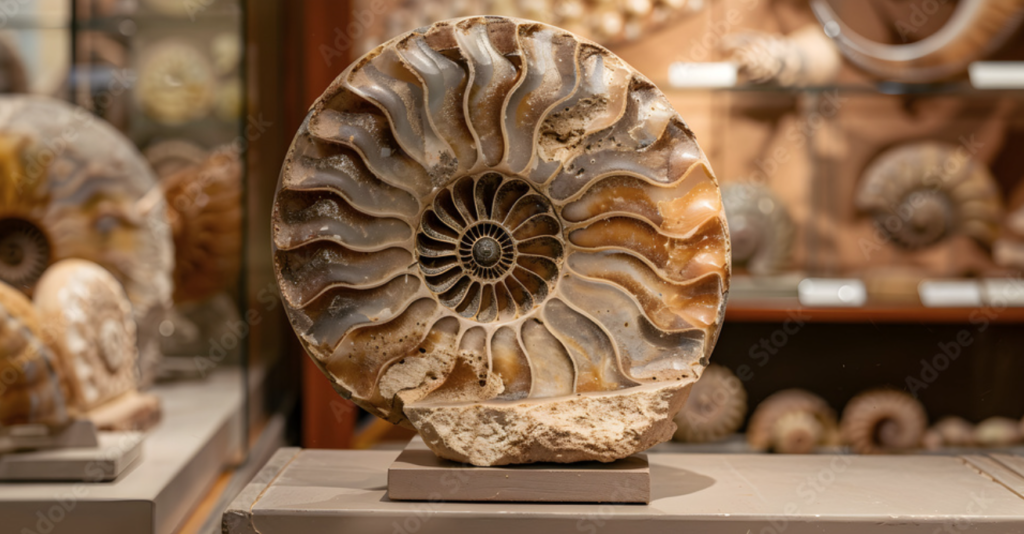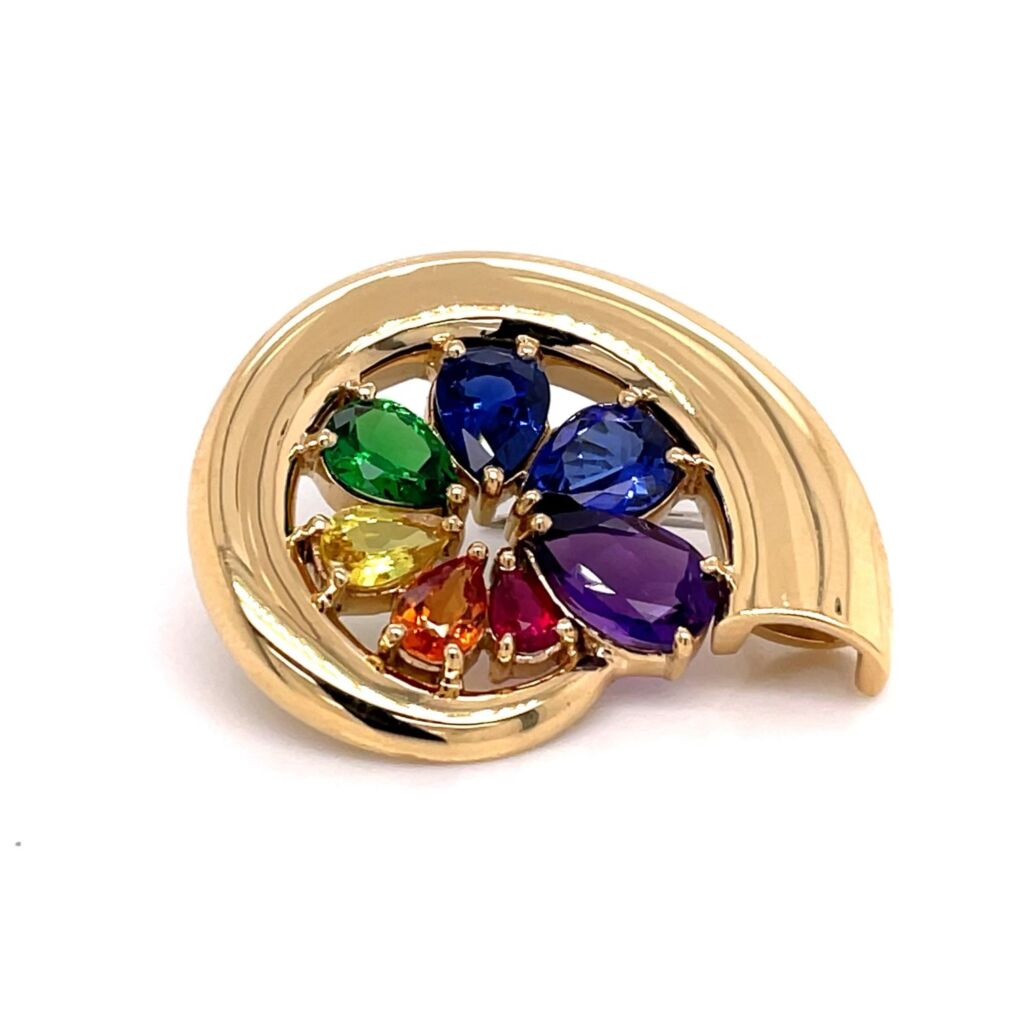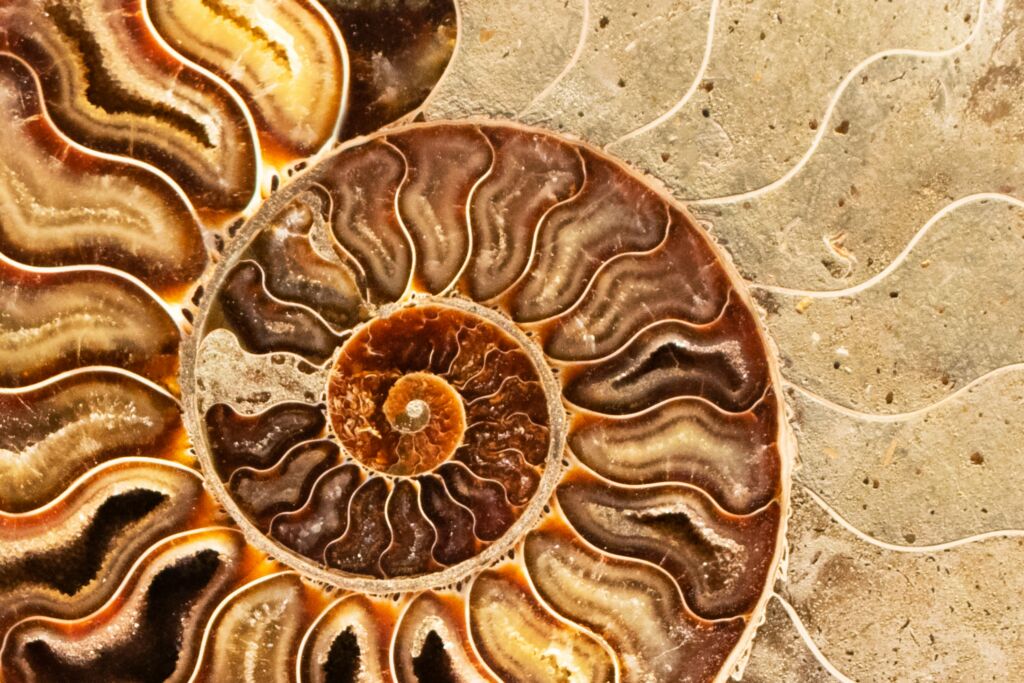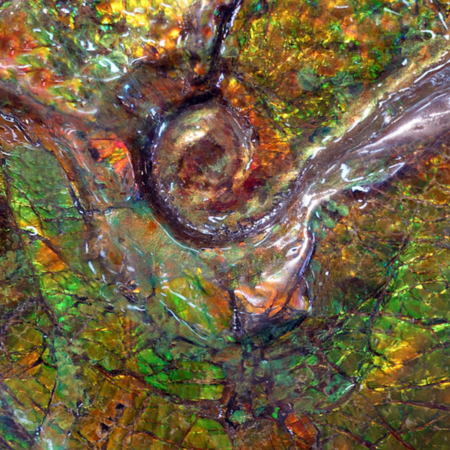From Ancient Times to Modern Jewelry

Ammonites flourished during the Mesozoic era, showcasing an incredible variety of species with unique and intricate shell patterns.
Ammonite fossils, the mesmerizing remnants of ancient marine life, have captivated human imagination and admiration for millennia. Their intricate spirals and vibrant colours tell a story of deep geological history intertwined with cultural legends and artistic inspiration. Let’s embark on a journey through time to explore the rich history and cultural significance of Ammonite fossils, from their ancient origins to their modern use in stunning jewellery pieces.

Ammonite fossils serve as valuable educational tools, providing a tangible connection to Earth’s prehistoric past.
Ancient Origins and Mystical Allure
Ammonites, marine mollusks that thrived in the Earth’s oceans during the Mesozoic era, have left behind fossils that are both scientifically significant and visually striking. These creatures, related to modern squids and octopuses, lived between 240 and 65 million years ago. Their spiral shells, often beautifully preserved, have become iconic symbols of natural history.
The name “Ammonite” is derived from the Egyptian god Ammon, who was depicted with ram’s horns. The resemblance of these fossils to coiled horns led ancient civilizations to associate them with divine protection and eternal life. In ancient Egypt, Ammonite fossils were revered as sacred objects, often included in burial rites to safeguard the deceased in the afterlife.
Cultural Significance Across Societies
- Egyptian civilization: Ammonite fossils held a special place in Egyptian culture. They symbolized protection and the eternal cycle of life. They were believed to provide safety and prosperity, making them valuable talismans.
- Greek and Roman societies: In Greek and Roman mythology, the spiral shape of Ammonites represented infinity and continuous growth. These fossils were integrated into various aspects of art and philosophy, reflecting the cyclical nature of existence.
- Indigenous Tribes of North America: Among the Blackfoot tribe in North America, Ammonites were known as “Iniskim” or buffalo stones. These fossils were considered sacred and used in rituals to bring good fortune, especially in hunting. They were cherished as powerful symbols of abundance and protection.
Interested in learning more about Canadian Ammonites? Read here for a captivating glimpse of the unmatched beauty to these remarkable fossils.
Medieval and Renaissance Fascination
During the Middle Ages, Ammonite fossils were often referred to as “snakestones,” believed to be petrified remains of coiled serpents. These fossils were thought to possess magical properties, offering protection against snake bites and other dangers. The Renaissance era marked a shift towards scientific inquiry, with naturalists studying Ammonites to understand their origins and significance.

Ammonites, ancient marine mollusks, lived between 240 and 65 million years ago, leaving behind beautifully preserved spiral shells.
The Influence of Ammonite in Feng Shui
Ammonite fossils, with their ancient origins and mesmerizing beauty, have found a significant place in the practice of Feng Shui. Feng Shui, the ancient Chinese art of harmonizing individuals with their environment, values Ammonite for its powerful energy and symbolism. Practitioners of Feng Shui believe that Ammonite possesses a unique ability to transform and revitalize spaces, making it an essential tool for enhancing the flow of positive energy, or “chi.”
Origin of Interest in Ammonite for Feng Shui
The fascination with Ammonite in Feng Shui can be traced back to its symbolic representation of continual change and evolution. Ancient Chinese scholars and geomancers observed the spiral patterns of Ammonite and recognized them as natural embodiments of the life force energy, or “qi.” This led to the incorporation of Ammonite fossils in various Feng Shui practices aimed at promoting harmony, balance, and prosperity. The belief that these fossils carry the energy of the Earth and the wisdom of ancient seas resonated deeply with Feng Shui principles, sparking a long-standing appreciation and usage in this ancient art.

Ammonite’s spiral shape is believed to create a movement of energy, encouraging personal growth and transformation in Feng Shui practices.
Modern Jewellery and Artistic Expression
The Victorian era witnessed a revival in the use of Ammonite fossils in jewellery, where unique patterns and colours made them highly fashionable. This trend has continued into the modern era, with Ammonite fossils and Ammolite—a gemstone derived from fossilized Ammonite shells—being highly prized for their beauty and rarity.
- Victorian era: Ammonite fossils were incorporated into elegant jewelry pieces, from brooches to necklaces, appreciated for their historical and aesthetic value.
- 20th Century to present: The discovery of Ammolite in Southern Alberta, Canada, added a new dimension to the allure of Ammonites. Ammolite, with its iridescent play of colours, has become a sought-after gemstone, gracing jewellery with its vibrant hues and natural splendour.
Contemporary designs: Modern designers embrace the uniqueness of Ammonite fossils, creating jewellery that ranges from minimalist to extravagant. Each piece is a testament to the natural artistry of these ancient creatures, making every item a distinctive masterpiece.

The birth of Iniskim pendant logo created by celebrated jewellery designer Llyn Strelau. It features each color of the rainbow with seven graduated pear-shaped gemstones representing the beauty of Ammonite.
Today’s Interest in Ammolite for Jewellery and Collecting
Today, Ammolite is celebrated not only for its stunning beauty but also for its rarity and unique origin. The vibrant hues of Ammolite, ranging from fiery reds and oranges to cool blues and greens, make it an extraordinary addition to any jewellery collection. Jewellery designers are increasingly drawn to Ammolite for its ability to create eye-catching, one-of-a-kind pieces that stand out in a market saturated with more common gemstones.
Why Collectors and Designers Choose Ammolite:
- Rarity and value: Ammolite is found exclusively in the Bearpaw Formation of Southern Alberta, making it one of the rarest gemstones in the world. Its limited availability enhances its desirability and value.
- Natural beauty: Unlike synthetic gemstones, Ammolite’s colours and patterns are entirely natural, resulting from millions of years of fossilization. This natural origin adds to its allure and authenticity.
- Symbolism and energy: Many believe that Ammolite carries powerful energies, symbolizing transformation, harmony, and prosperity. This adds a layer of meaning to jewelry pieces, making them not just beautiful but also spiritually significant.
Interest in Handheld Specimens
Beyond jewelry, Ammolite and Ammonite fossils are highly sought after as collectible specimens. Enthusiasts and collectors appreciate these fossils for their historical significance, natural beauty, and the story they tell of ancient Earth.
- Educational value: Ammonite fossils provide a tangible connection to Earth’s prehistoric past, making them valuable educational tools for museums, schools, and private collectors.
- Decorative appeal: Handheld specimens of Ammolite and Ammonite are often displayed in homes and offices as unique decorative pieces. Their vibrant colors and intricate patterns make them striking conversation starters.
- Investment potential: As natural resources become scarcer, the value of high-quality Ammolite and Ammonite specimens is expected to increase. Collectors view these fossils as both beautiful additions to their collections and wise investments for the future.

Beyond jewelry, Ammolite and Ammonite fossils are treasured as collectible specimens for their historical significance and natural beauty.
Conclusion
Ammonite fossils, with their rich history and cultural significance, continue to captivate and inspire. From ancient talismans to modern jewellery, they represent a bridge between the past and present, symbolizing protection, prosperity, and the beauty of nature. Whether incorporated into stunning jewelry or collected as handheld specimens, Ammonite and Ammonite offer a unique connection to Earth’s ancient legacy.
For more insights into the fascinating world of Ammonites and to explore exquisite Ammolite gemstones, we invite you to explore our website or contact us directly. Join us in celebrating the rich history and cultural significance of these remarkable fossils.

High-quality Ammolite specimens are viewed as both beautiful additions to collections and wise investments for the future.


